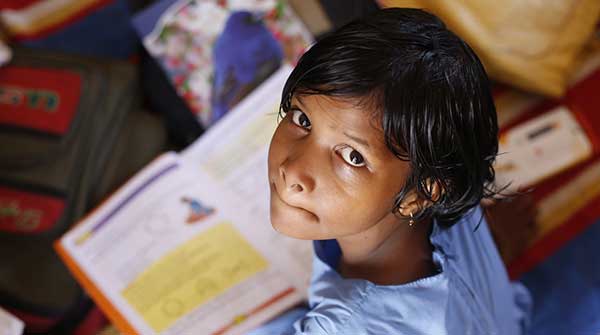India’s total energy demand to grow by 70 per cent by 2040. Is Canada ready to take advantage of the opportunity?

India’s GDP is expected to more than double over the next decade, reaching $7.5 trillion in 2031 compared to $3.5 trillion in 2022, according to a forecast by Morgan Stanley, with analysts predicting it is “poised to become the factory to the world.”
According to the United Nations Population Fund, India is expected to have the world’s largest population by 2028, reaching 1.45 billion and rising to 1.67 billion people by 2040. The country is growing fast, but is “yet to climb the ladder of prosperity,” says India’s Ministry of Finance.
In 2021, India ranked 101 of 167 countries in the Legatum Prosperity Index. The index, published by the UK-based Legatum Institute, considers metrics like safety, personal freedom, living conditions, health, and economic quality. Since 2011, India has moved up the rankings by 11 places.
 |
| Related Stories |
| How can Canada productively engage India?
|
| India undermining America’s ban on Russian oil
|
| The flavour, energy and urgency of India unfold spontaneously In Travel |
All of that will take a lot of energy. According to the International Energy Agency (IEA), by 2040 India’s total energy demand will be 70 per cent higher than it was in 2019.
“Indian energy demand is essentially bottomless for the long term, and they’re going to need as many sources of energy as possible,” according to foreign policy expert Shuvaloy Majumdar, who recently stepped down as head of the foreign policy and national security program with the Macdonald-Laurier Institute.
While renewables like wind and solar are expected to grow to supply 10 per cent of India’s energy mix in 2040, up from one per cent in 2019, India isn’t shy about its ongoing need for fossil fuels. Oil and gas is projected to rise to 37 per cent in 2040 from 32 per cent in 2019 as more natural gas enters the market.
In its latest economic survey, India’s Ministry of Finance highlighted that energy security is again the top priority, even in Europe, as nations work to reduce reliance on Russia.
“When one considers that developed countries set aside their obsessive concerns about climate change and global warming to burn more coal to generate electricity this year … it does not seem so strange or irresponsible that developing countries must put their own growth and development aspirations ahead of their global climate obligations,” the ministry said.
According to the IEA, coal supplied 44 per cent of India’s energy needs in 2019, with 23 new coal plants under construction and 21 in pre-construction as of July 2022, according to Global Energy Monitor.
India’s reliance on imports – about 85 per cent of its oil and 50 per cent of its natural gas – also makes India vulnerable to energy price spikes from geopolitical developments like war, civil strife and government sanctions, wrote to Gateway House Indian Council on Global Relations’ Amit Bhandaria in a 2020 report.
Canada’s oil and gas industry, he added, can be “a form of insurance” against price spikes from unstable suppliers. In 2021, its biggest suppliers were Iraq, Qatar and Saudi Arabia, according to the U.S. Energy Information Administration. Last year Russia rose to the top, providing as much as 25 per cent of India’s oil imports, according to S&P Global.
India is eager to receive more oil (and natural gas) from Canada for decades to come, according to Majumdar. “In the Indo-Pacific region, I’m aware that the Indians are certainly interested in long-term, stable partnerships with Canadian energy because they’re not entirely content with the partnerships that they presently hold,” he says.
But Canada’s energy opportunity in India isn’t just about oil and gas, he says. It’s also about critical minerals to meet Indian electrification demand, conventional nuclear technology, small modular reactors, uranium resources, and more.
“This is not just traditional energy,” he says. “We’re talking emission-free nuclear energy; we’re talking about leading-edge technologies like hydrogen, carbon capture and sequestration, geothermal; all of these are Canada’s energy proposition.”
Canadian oil is already being purchased by Indian refiners. In fact, two million barrels of Canadian heavy oil is headed to India this month to buyer Reliance Industries, owner of the world’s largest oil refinery. LNG could do the same once Canada’s first export project is up and running in 2025.
Gateway House’s Bhandari noted that state-owned Indian Oil Corporation had a 10 per cent stake in the proposed Pacific NorthWest LNG terminal in B.C. before that project was shelved in 2017.
According to the IEA, using natural gas instead of coal for power generation reduces emissions by about 50 per cent. A 2020 study focusing on Asia found that LNG from Canada could do even better, decreasing emissions by up to 62 per cent.
Bhandari says it’s a good idea for India to invest in Canadian oil and gas no matter whether India itself ultimately uses the resources.
“One of the few ways to protect against high oil prices is by acquiring stakes in oil and gas fields globally – without the oil (or gas) necessarily having to reach India physically,” he wrote. “For India, investing in the Canadian upstream should be seen as a form of insurance.”
“India is ready to be an investor in our oil and gas. It’s ready to be a purchaser of our oil and gas. It’s ready to be a long-term partner for both our countries’ economic development,” Majumdar says.
“If Canada decided to focus on Indian development, its energy, its education systems, infrastructure, its investment climate, it would put Canada at the heart of Indo-Pacific growth for the next half-century.”
Deborah Jaremko is director of content for the Canadian Energy Centre, an Alberta government corporation funded in part by taxes paid by industry on carbon emissions.
For interview requests, click here.
The opinions expressed by our columnists and contributors are theirs alone and do not inherently or expressly reflect the views of our publication.
© Troy Media
Troy Media is an editorial content provider to media outlets and its own hosted community news outlets across Canada.


